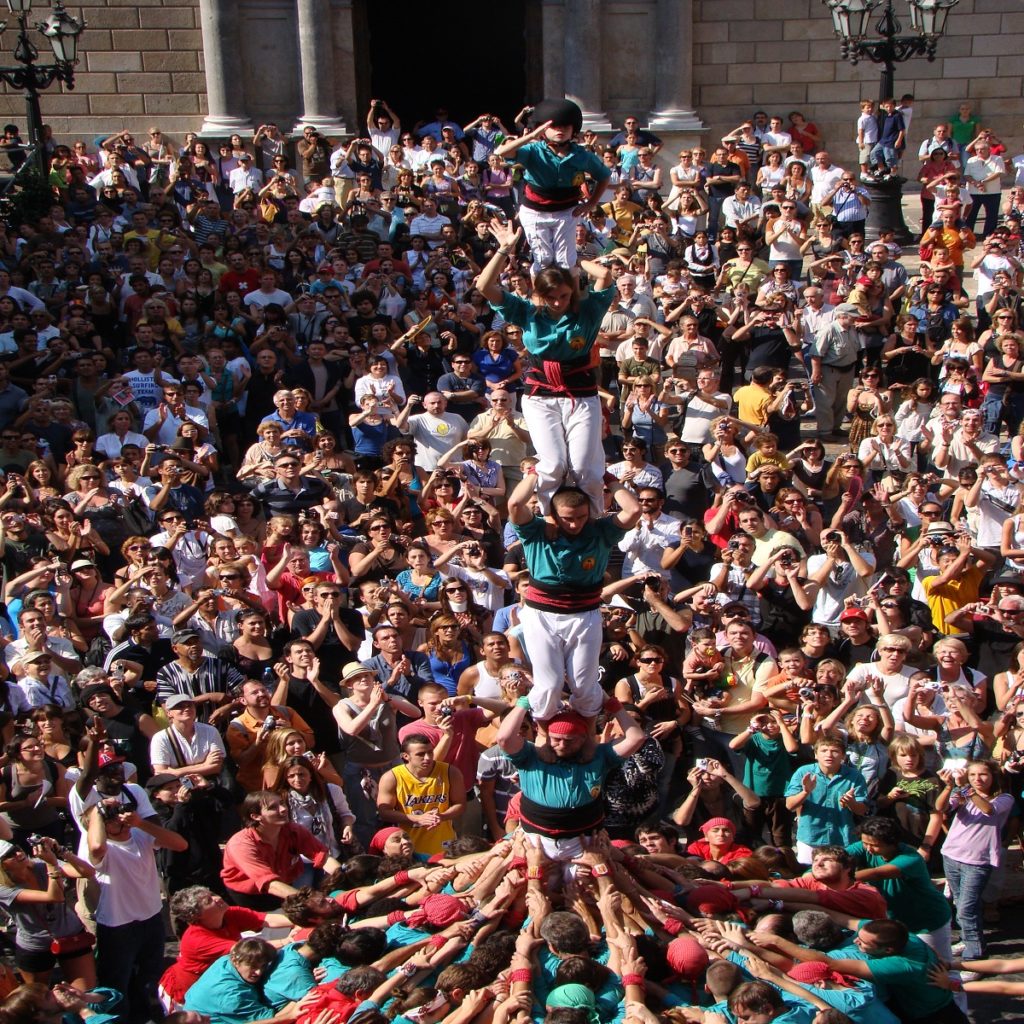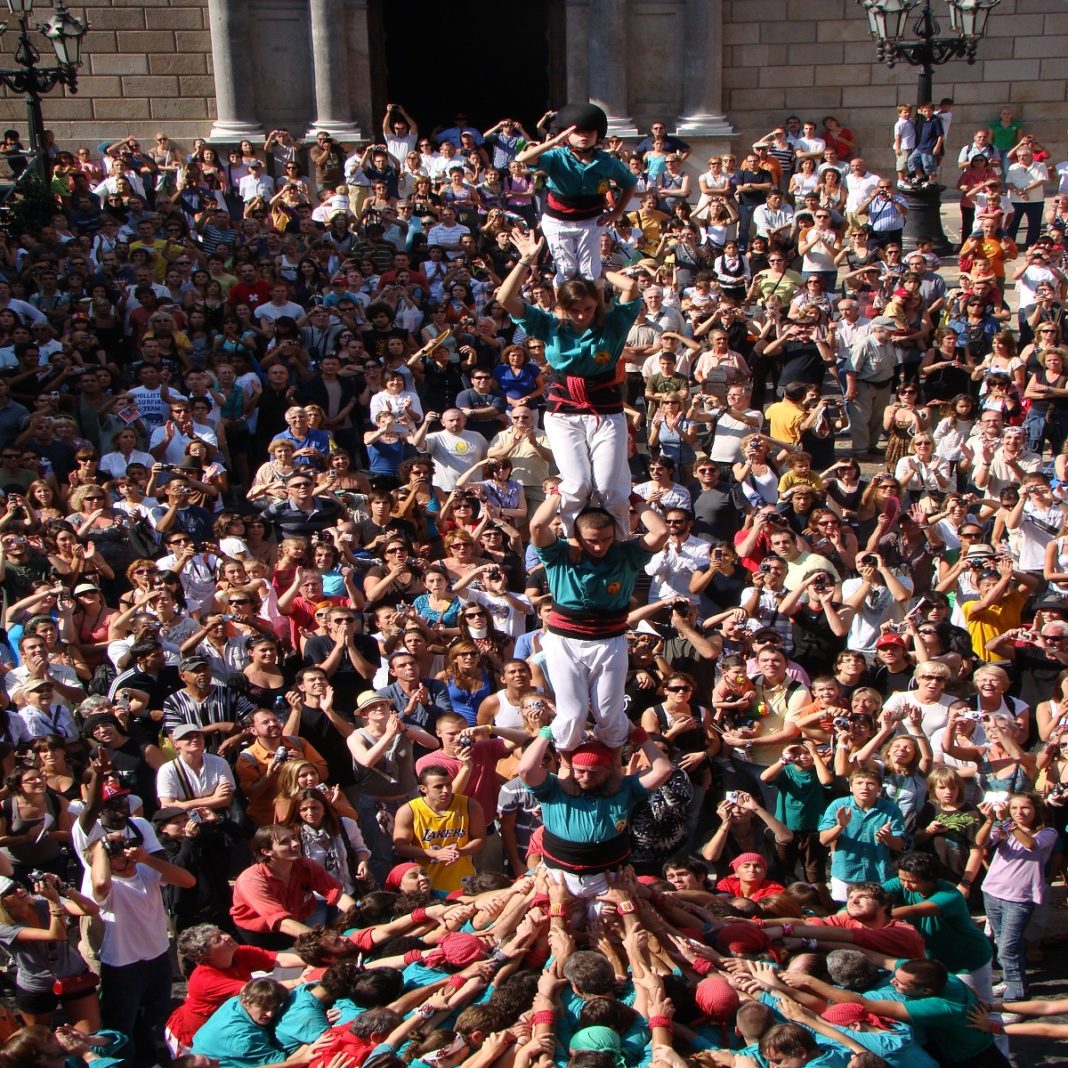Human towers, or ‘castells’, were added to UNESCO’s list of Intangible Cultural Heritage of Humanity in 2010 as an “integral part of (Catalan) cultural identity”.
The tradition dates back to the 18th century when people first started building human towers in the Catalan town of Valls.

In an event held in Tarragona every two years, teams of ‘castellers’ compete to construct the highest and most complicated tower by standing on each other’s shoulders.
The team from Vilafranca beat 40 other groups to take the top spot and scoop the 16,000 euro ($15,679) prize at the competition, which takes place every two years.
Their tower reached 10 tiers high – around 13 metres (43 ft)- and a combination of height and skill, including a safe dismount, gave them the most points..
The youngest and most nimble team members – wearing a protective helmet – scrambled up the backs and shoulders of their teammates to the top.
“Without kids there would be no castells,” sports psychologist Anna Jordand, 30, head of the children’s squad of the Ceballuts team, told Reuters.
“They are the boys and girls who have to go up to the top, they have to coordinate the castells, and this is an essential part.”
The first castells competition in Tarragona bull ring took place in 1932 and the competition has been held every other year since 1970.
According to Reuters















